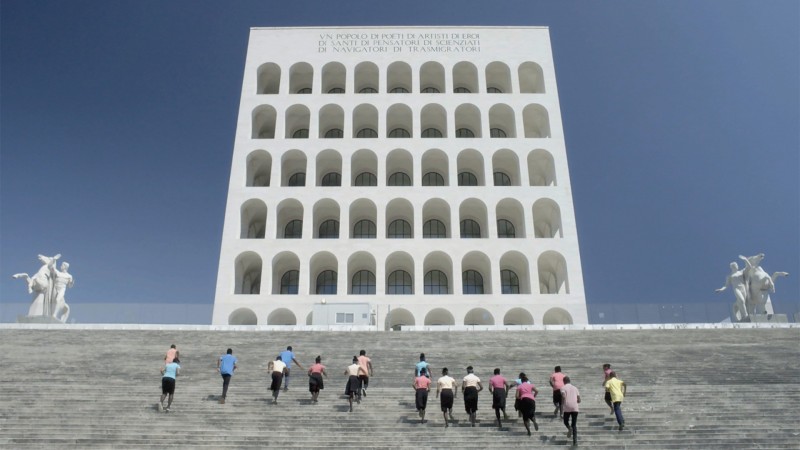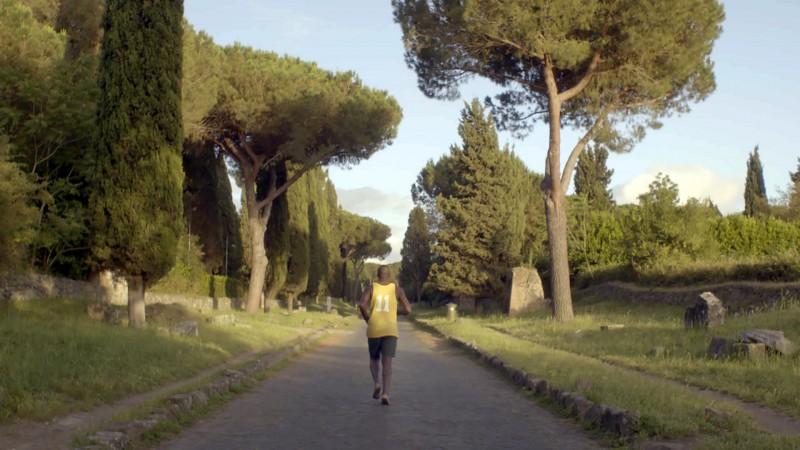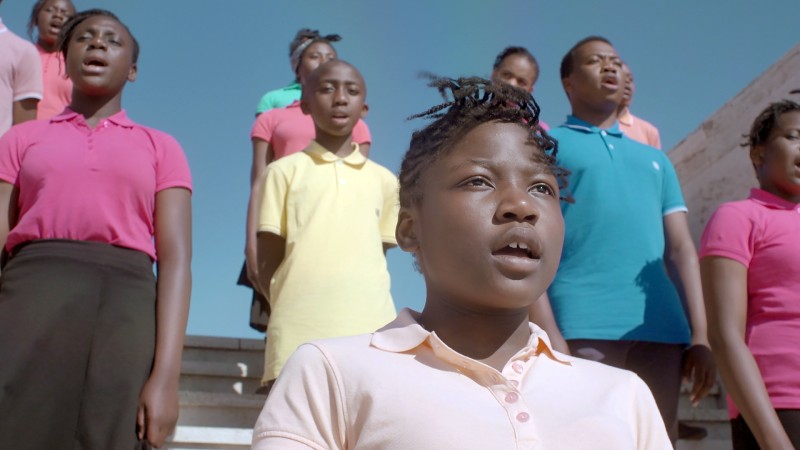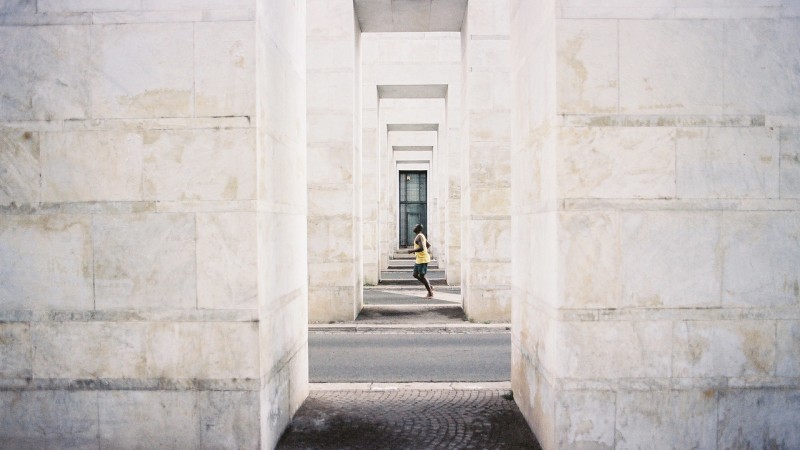Nina Fischer & Maroan el Sani
Freedom of Movement
Nina Fischer:
* 1965 in Emden, GER
studied at the Universität der Künste Berlin, GER, the Rietveld-Academie in Amsterdam, NED, and the Deutsche Film- und Fernsehakademie Berlin, GER
Maroan el Sani:
* 1966 in Duisburg, GER
studied at the Freie Universität Berlin, GER
both live and work in Berlin, GER
In the first video of the three-channel installation, a voiceover gives an account of how Abebe Bikila won the first gold medal for sub-Saharan Africa at the Olympic Games in Rome in 1960 and became a symbol of liberation from colonialism. The winning run re-enacted for the film is included in the work in slow motion and once again underscores the relevance of each of Abebe Bikila’s strides. Archival videos from the period of fascist Italy under Benito Mussolini and the attack on Abyssinia (today’s Ethiopia) as well as the looting of Abyssinian cultural artifacts make the dimension of Bikila’s victory clear. The architectures in Rome built by Mussolini, like the Foro Italico and the district Esposizione Universale di Roma (EUR), also play a pivotal role in the film. According to Mussolini’s wishes, the latter was to accommodate the World’s Fair in 1942 and additionally serve as a prototype for the capital of a colonial power, as which Italy wanted to be perceived. In terms of city planning, it connected the center of Rome via the Viale Cristoforo Colombo with the sea, following the fascist directive of »bringing Rome to the sea.« The film raises questions as to how this legacy is to be treated. In the two other films, history is increasingly interwoven with the present. The film describes running as symbolizing the aspiration for security and opportunities, a reason why many people leave their homeland. The protagonist runs with Bikila’s number 11 from the sea via the EUR district to the Foro Italico in the center of Rome, which reminds one of the fascist directive but also of the arrival of refugees at the shore and the way to the city. Number 11, in turn, bears witness to triumph. The film also shows a choir standing on the Colosseo Quadrato in EUR above a carved quote from a speech by Mussolini, in which he declared war on Ethiopia. The choir sings the quote in an altered form: »We come from nations of poets, artists, heroes, saints, scientists, seafarers, and migrants.« By recontextualizing the architecture, the work draws attention to the diversity in society and our shared history. The protagonist finally arrives on a sports field, where he comes to a halt and encounters a formation of running men. The golden-silvery foil blankets in their hands remind one of the arrival of refugees from the sea, but also of proud flagbearers at Olympic Games. The film ends with the protagonist’s long gaze into the camera.
Anna Fröse
Artist Statement
With our work we focus on the phenomena of fragmented realities through nonlinear narratives in various media such as film, video, intervention, installation and photography. We reflect the rise and fall of modernity, the intense relationship between our contemporary society and utopian projects that have driven the evolution of our history, from the past to the future. Our work is a permanent pursuit of and negotiation with the transition of time.
In our work Freedom of Movement, we are examining the complexity of ideological, political and architectural implications of Bikila’s 1960’s Olympic gold medal run to this day. Evoking the Olympic marathon from Rome 1960, in which the Ethiopian runner Abebe Bikila conquered the African continent’s first gold medal, running barefoot and becoming a sporting legend and a symbol of the Africa that was freeing itself of colonialism, we have recontextualised amidst Rome’s rationalist architecture, a new race involving refugees and immigrants staking a claim to their “freedom of movement”, also understood as the possibility of being welcomed in another country. The narrative aims at linking the stories of the 1960’s marathon, the current migration crisis and the silent language of Rome’s controversial modernist architecture.
Nina Fischer & Maroan el Sani



